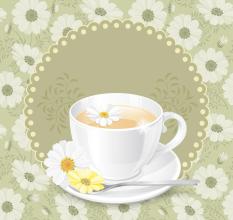Flavor description of Starbucks Arabica Coffee beans introduction to the taste of grinding scale varieties
Flavor description of Starbucks Arabica Coffee beans introduction to the taste of grinding scale varieties
What is the growing environment of Arabica coffee beans?
Generally in the equatorial north and south latitude 23.5 degrees, above 1500 meters above sea level plateau and mountain volcanic soil, the annual temperature is constant between 15-25 degrees, there is plenty of rainfall to avoid strong direct sunlight to grow in the environment.
"Arabica coffee beans are also called Elaraby coffee and Arabica coffee beans (introduced by Wen teacher Arabica Coffee)."
Ask what kind of coffee Arabica beans can make.
The Elaraby coffee bean fruit is oval, there are generally two slightly flat beans, the bean body is small and round, the front is long oval, the middle crack is narrow and curved in S shape, and the arc on the back of the bean is smooth. The main producing areas are South America, Central American countries, Africa and Asia. A small amount of Arabica coffee beans are also grown in Yunnan, Hainan and Taiwan of China.
Starbucks chooses Starbucks coffee beans.
Add: in a broad sense, there are two kinds of coffee beans in the world, Arabica beans and Robosta beans. The earliest Arab way to eat coffee was to chew the whole fruit (Coffee Cherry) to absorb its juice. They then mixed the ground coffee beans with animal fat as a physical supplement for long trips, and it was not until about 1000 AD that the green coffee beans were boiled in boiling water to make an aromatic drink. Three centuries later, the Arabs began to bake and grind coffee beans. Because drinking is strictly forbidden in the Koran, Arabs consume a lot of coffee, so religion is actually a big factor in the popularity of coffee in the Arab world.
Robusta grows in an area with an altitude of 0800 meters, a temperature of 1836 ℃ and an annual precipitation of 2200-3000 mm. From flowering to fruit ripening for about 7-9 months, its bean line is round, with weak wet aroma (aroma) and woody (woody). The coffee produced has a strong bitter taste and low sour taste. Its caffeine content is 1.8 ~ 3.5%. Robota beans have a single taste and strong bitterness, so they are not tasty enough. They are generally used in instant coffee, canned coffee, liquid coffee and other industrial coffee, and a small part of them are used to prepare Italian concentrated mixed beans. It can improve the mellowness of Italian espresso.
Elaraby grows in an area with an altitude of 600-2200m, a temperature of 15 °- 24 °C and an annual rainfall of 1200-2200mm. From flowering to fruit ripening for about 7-9 months, its bean shape is long and has a strong and round wet aroma. The coffee made from Arabica coffee has strong complex flavors such as flowers, fruit, chocolate and caramel. The bitter taste and sour taste of the coffee are well balanced. Its caffeine content is less than 1.5%. Arabica beans are rich in aroma and taste, and taste softer and palatable. Therefore, it occupies a major position in the market. The caffeine content is about 1.5%.

Important Notice :
前街咖啡 FrontStreet Coffee has moved to new addredd:
FrontStreet Coffee Address: 315,Donghua East Road,GuangZhou
Tel:020 38364473
- Prev

The difference between hand-brewed coffee and French-pressed coffee-which brand of mocha pot is good?
The difference between hand-brewed coffee and French-pressed coffee-what brand of mocha pot has been a staunch supporter since its birth in 1929. Among the many coffee utensils, it can almost be regarded as the most convenient way to extract, so it is also regarded as the best endorsement for lazy people. French kettles come in all sizes and can be used not only for single cups but also for parties. Moreover, it is self-contained, when it is brewed.
- Next

The grinding of American coffee machine the specific water temperature parameters of coarse powder and water introduce the making method of Italian coffee.
Coffee machine grinding thickness value-espresso powder thickness how many mesh mocha pot is more complex, related to the use of heating energy, if it is a gas stove, the heat is more fierce, it is best to grind a little thicker, so as to avoid excessive extraction. It is recommended to use induction cooker or alcohol lamp, the firepower is easier to control, otherwise the mocha pot is easy to soak bitterness.
Related
- Beginners will see the "Coffee pull flower" guide!
- What is the difference between ice blog purified milk and ordinary milk coffee?
- Why is the Philippines the largest producer of crops in Liberia?
- For coffee extraction, should the fine powder be retained?
- How does extracted espresso fill pressed powder? How much strength does it take to press the powder?
- How to make jasmine cold extract coffee? Is the jasmine + latte good?
- Will this little toy really make the coffee taste better? How does Lily Drip affect coffee extraction?
- Will the action of slapping the filter cup also affect coffee extraction?
- What's the difference between powder-to-water ratio and powder-to-liquid ratio?
- What is the Ethiopian local species? What does it have to do with Heirloom native species?

